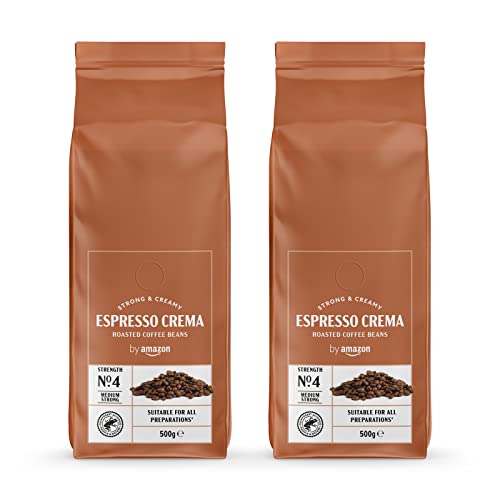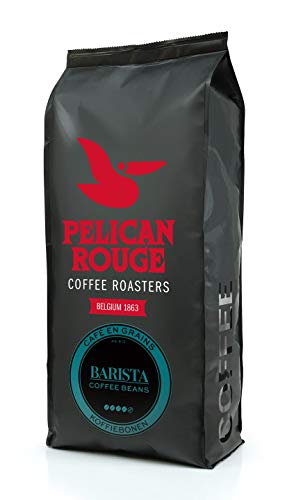The 10 Most Scariest Things About Espresso Coffee Beans 1kg
페이지 정보

본문
 Espresso Coffee beans 1kg (Telegra.Ph)
Espresso Coffee beans 1kg (Telegra.Ph)A good espresso requires a blend of beans that are suited to the style of beverage. While regular middle or light roast beans can be used to make espresso, the flavor may not be right for the.
 The best espresso beans are smooth and nuanced with an intense crema. They also contain less caffeine than drip-style coffee.
The best espresso beans are smooth and nuanced with an intense crema. They also contain less caffeine than drip-style coffee.Origin
The history of espresso coffee beans is a fascinating story. According to legend the 9th century saw an Ethiopian Goat-herder named Kaldi found the first coffee plant among his goats and noticed its unique energizing effect on his goats. He began feeding his herd the fruits of the Coffea arabica coffee beans 1kg plant and they became stronger and healthier, as well as began to be more active. This was the start of a wonderful beverage which is now enjoyed by people around the world.
The brew we recognize as espresso is made by pushing hot water under pressure over a bed of finely crushed coffee beans. The resulting brew is rich in flavor and highly concentrated, with a layer smooth, tight bubbles known as the crema. This is the hallmark of a great espresso and has spawned a whole culture around the beverage.
Espresso is popular not only in cafes but can also be made at home. You can get the perfect cup of coffee each time by investing in the right equipment and roasting beans yourself. It is longer than buying coffee from a shop, but it's worth the effort in terms of taste and quality.
It is important to choose the best coffee beans for your espresso to ensure a smooth and delicious coffee beans uk 1kg. While many people use regular coffee beans to make espresso, this isn't recommended since they are roasted differently and ground in a different way, and this can result in an extremely weak or bitter the brew.
The espresso coffee beans 1kg we sell are specifically roasted and ground for the espresso brewing method and will provide you with an exceptional cup of coffee each and every time. We only purchase Arabica and Robusta coffee beans from farms committed to sustainable agriculture and high ethical standards. This unique coffee comes from the Colombian region Huila, which is renowned for its fertile valleys, snow-capped mountains, and soil that has been enriched with minerals over time.
Roast
Roasting is the process that turns raw green beans into coffee we drink. The roasting process is responsible for the coffee's taste color, aroma, and colour. The roasting process is a very precise science and requires great skill and experience to control the temperature of the flame so that the beans don't overheat and become dark, bitter or oily.
While roasting, the beans can lose up 55% of their moisture. They also expand in size. They will also start to release carbon dioxide, which causes them to expand and break which is known as the 1st crack. The first crack marks the moment when sugars begin to caramelize, and bound water begins to escape and the structure of the bean breaks down allowing oils to move from their tiny pockets in the seed. It is a critical moment in the roasting process, and when done in a hurry, the coffee can be damaged.
A coffee that is well-roasted will be rich and full of flavor with smooth, balanced taste. It will have a distinct aftertaste and minimal sourness, while maintaining the origin character of bean. This is accomplished by roasting the beans until they are into a medium-brown and have lost most of their moisture.
After the seeds have been roasted, it is important to cool them down as fast as you can to prevent them from burning. This will release more carbon dioxide. Based on how they're cooled and the speed at which they are done they could end in a light roast, a medium roast, or a dark roast.
Espresso coffee is typically a blend of different beans. While single origin beans work for certain brewing methods but the smoky flavours of espresso require a blend of various bean types.
It is recommended to use a high-quality espresso machine to make the best cup of espresso. The top machines include an extra water tank for the espresso as well as a larger capacity boiler that will allow for faster heating. The water tank should be filled with clean, cold water to ensure the highest extraction quality.
Dose & Yield
One shot of espresso is made by pushing one gram ground coffee through the brewing process. The ratio of liquid espresso to ground coffee must be less than or equal to 1 kg coffee beans:2. The exact ratio is determined by the density of the beans. Certain coffees are more heavy than others when they are ground to the same size. This is why a scale that is precise can be so useful!
The temperature of the brew can affect how you use your coffee beans. The ideal temperature is between 205-205 degrees Fahrenheit and 195 degrees. This is because the flavor compounds in your beans are best extracted in this range. A higher or lower temperature can affect the texture, flavor and thickness of the crema, and also the consistency and amount of extraction.
It is always a trade-off between a strong coffee bean 1kg and a rich flavor. The more you extract the stronger it will be however, it also increases the risk of bitterness and acidity. You might be tempted to offset this by making recipes that have high yields. When you increase the multiplier, you also increase the amount of water that flows through the grinds. This is crucial and could cause more flavour to be lost.
The dose is the most flexible control, but many other factors affect the strength of the espresso. The ratio is the most important element, as is the accuracy of your grinder as well as the size and speed of your portafilter, and the speed at which you draw your shot.
For instance, a greater ratio (less than 1:2) produces a smoky but balanced espresso with a sweet mouthfeel and a clearness of flavour. On the contrary, a smaller ratio will result in an intense, but less balanced espresso. Finding the right balance is crucial. You can achieve this by adjusting the ratio and playing with the dose according to the intensity and flavour you prefer.
Brewing
Espresso beans are ground finer than regular coffee beans and brewed at more pressure. This results in a stronger shot of coffee, with more intense aromas and flavors. Espresso is used in a variety coffee recipes, including cappuccinos and lattes, which are generally made with milk. Espresso is sometimes used in baking, or as a garnish for desserts that contain coffee or chocolate.
Espresso coffee can be prepared with a number of different methods of brewing like drip coffee, Turkish coffee, cold brew, and French press. The type of brewing technique you select will be based on your personal taste and the equipment you've got. Experimenting with different brewing techniques and ingredients will aid you in finding the perfect cup of espresso.
It is possible to use espresso beans in other drinks made with coffee, but they should be reserved for beverages that are espresso-based. Espresso beans are roasted over a long, usually up to and over the second crack, giving them a much darker and more toasted flavor. Additionally espresso beans are usually roasted with higher levels of volatile compounds such as chlorogenic acids 4 and trigonelline 2, which contribute to the body, bitterness, and flavor of espresso.
Although it is technically feasible to make espresso from any type of coffee bean roasted however, it is unlikely to produce the desired results. Espresso beans are roasted to bring particular flavors, like chocolatey and fruity, which are difficult to replicate with other roasts.
The key to making espresso is to get a great crema. This is a rich, thick layer of coffee foam that reaches the surface of the coffee when it is extracted under high pressure. A great crema indicates that you have combined all the essential ingredients like your grinder, coffee beans and resistance in the coffee bed, to create a top-quality coffee.
The quality of your coffee beans is essential to creating a smooth creamy crema. The finest espresso beans are those that have been roast at a medium to dark roast and then ground as finely as possible. They must also be fresh, as whole beans will retain their flavor and taste for longer than pre-ground varieties. It is also essential to keep beans in an airtight jar free of heat and moisture.
- 이전글Solutions To Issues With French Style Fridge 24.12.17
- 다음글14 Businesses Doing A Great Job At How To Get Diagnosed With ADHD 24.12.17
댓글목록
등록된 댓글이 없습니다.




